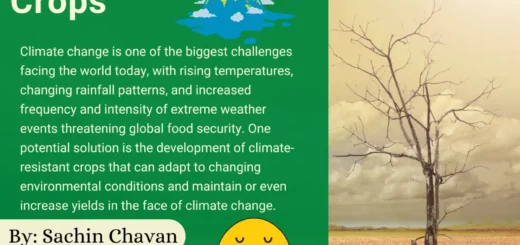[PDF] Basic vs Applied Research: Pointwise Comparison
![[PDF] Basic vs Applied Research: Pointwise Comparison 1 Basic vs Applied Research: Unveiling the Distinctions](https://biologywala.com/wp-content/uploads/2023/08/Applied-vs-Basic-research-1-1-scaled.webp)
In the dynamic realm of academia and innovation, the intriguing dichotomy of “Basic vs Applied Research” frequently comes to the forefront. These terms serve as cornerstones of scientific exploration, each with its unique role in shaping our comprehension of the world and propelling technological progress. Delve into this all-encompassing article as we plunge into the depths of basic and applied research, unravelling their core disparities, distinct purposes, and combined influence on the forward march of human knowledge and society at large.
Basic vs Applied Research:
Basic Research:
Basic research, also known as fundamental or pure research, is the foundation of scientific exploration. Its main aim is to enhance our fundamental comprehension of natural phenomena, devoid of any immediate practical objectives. This type of research strives to answer core questions about the universe’s nature, the governing laws of its behaviour, and the underlying mechanisms behind various phenomena.
In basic research, the pursuit of knowledge for its intrinsic value takes precedence. Scientists rigorously delve into exploration, experimentation, and analysis to uncover the world’s mysteries, often resulting in the discovery of new theories, principles, and paradigms. A classic illustration is Einstein’s theory of relativity, which emerged from years of theoretical reflection and mathematical investigation, without any immediate practical applications in mind.
Applied Research:
Conversely, applied research functions as the link between scientific theory and real-world application. It utilizes the insights derived from basic research to tackle specific issues or devise practical solutions. In contrast to basic research’s focus on generating knowledge, applied research accentuates the usefulness of that knowledge.
In the domain of applied research, scientists and innovators collaborate to create technologies, products, and methodologies that can address tangible problems. This phase involves testing theories and concepts in practical scenarios, frequently resulting in innovations that transform entire industries. A prime instance is the development of vaccines, where years of basic research laid the groundwork for practical solutions that combat diseases and save lives.
Pointwise Comparison Chart:
| Aspect | Basic Research | Applied Research |
|---|---|---|
| Focus | Seeks to expand fundamental understanding without immediate practical application. | Aims to apply existing knowledge to solve specific real-world problems. |
| Objective | Generates new theories, principles, and paradigms. | Transforms theoretical insights into practical solutions. |
| Questions | Addresses fundamental questions about natural phenomena. | Addresses specific problems and seeks practical outcomes. |
| Scope | Often exploratory and open-ended, with no predefined goal. | Targeted and goal-oriented, with clear objectives. |
| Methodology | Employs experimentation, observation, and theoretical analysis. | Focuses on testing and refining concepts in practical scenarios. |
| Impact | Drives long-term advancements in knowledge and understanding. | Yields immediate benefits, revolutionizing industries and solving problems. |
| Timeframe | Outcomes may not have immediate practical applications. | Aims for practical results within a shorter timeframe. |
| Examples | Einstein’s theory of relativity, discovery of new particles. | Vaccine development, technological innovations. |
| Relation | Serves as the foundation for applied research. | Implements insights gained from basic research. |
| Innovation | Sparks paradigm shifts and shapes scientific progress. | Drives transformative change in industries and daily life. |
| Balance | Focuses on generating knowledge for future applications. | Focuses on applying knowledge for immediate benefits. |
Synergy and Collaboration
While basic and applied research might appear distinct, they are intrinsically connected in the grand tapestry of scientific progress. Basic research provides the theoretical underpinnings that inform applied research, while applied research serves as the conduit through which theoretical insights are translated into tangible benefits for society.
In fact, it’s not uncommon for a discovery made during basic research to later find practical applications through applied research. Take the case of the transistor, initially explored as a basic scientific concept, and later harnessed in applied research to create the foundation for modern electronics.
![[PDF] Basic vs Applied Research: Pointwise Comparison 2 Basic vs Applied Research: Unveiling the Distinctions](https://biologywala.com/wp-content/uploads/2023/08/Applied-vs-Basic-research-1-1-410x1024.webp)
Advancing Human Knowledge and Innovation
Both forms of research contribute significantly to the advancement of human knowledge and innovation. Basic research pushes the boundaries of our understanding, nurturing curiosity and expanding the frontiers of science. It lays the groundwork for breakthroughs and paradigm shifts that shape the course of human progress.
Applied research, on the other hand, drives tangible improvements in our daily lives. It transforms theoretical insights into innovative solutions, revolutionizing industries, and enhancing the quality of life for individuals worldwide. From medical breakthroughs to technological marvels, applied research is the driving force behind transformative change.
Balancing the Scales
In the grand spectrum of scientific exploration, striking a balance between basic and applied research is vital. While basic research may not yield immediate practical applications, it sets the stage for future discoveries that can change the world. On the other hand, applied research ensures that the knowledge generated from basic research is put to practical use, addressing societal challenges and fostering progress.
Summary:
In the ever-evolving landscape of scientific discovery, both basic and applied research play pivotal roles in shaping the course of human advancement. While basic research fuels our quest for understanding, applied research transforms knowledge into real-world solutions. Their interplay is the driving force behind innovation, progress, and the betterment of society at large.
Join SACHIN’S BIOLOGY on Instagram or Facebook to receive timely updates and important notes about exams directly on your mobile device. Connect with Mr. Sachin Chavan, the founder of Sachin’s Biology and author of biologywala.com, who holds an M.Sc., NET JRF (AIR 21), and GATE qualifications. With SACHIN’S BIOLOGY, you can have a direct conversation with a knowledgeable and experienced.
You will also like:
Download the Free Book of Plant Physiology by Taiz and Zieger 6th edition
[Download] Top 5 Books for Molecular Biology: Basic to Advance

![[Download] A Text Book Of Practical Botany 2 | Bendre Kumar Practical Botany PDF Book 4 [Download] A Text Book Of Practical Botany 2 | Bendre Kumar practical botany pdf book](https://biologywala.com/wp-content/uploads/2022/04/A-Text-Book-Of-Practical-Botany-2-FEATURED-520x245.webp)
